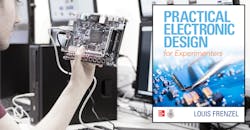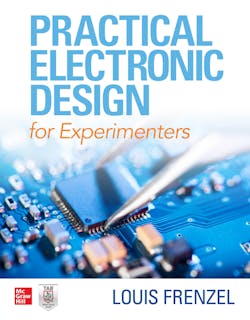You Don’t Have to be a BSEE Grad to Design Electronic Products
Having an EE degree doesn’t automatically grant, certify, or prove your qualifications to design circuits or equipment. However, if nothing else, it does indicate you have the potential. Professional Engineers (PEs) say that even with the degree, you still can’t call yourself an engineer unless you pass all of the state PE exams and meet the experience requirements.
Most of you reading this probably have a BSEE degree or something equivalent. Maybe a bachelor’s degree in physics, engineering technology, or other engineering discipline such as computer science or mechanical engineering. With that level of education, it’s generally assumed that you can do engineering work that’s principally design-oriented. Of course, not all degreed engineers design. Many of you are involved in manufacturing, test, QA, sales, or management. But whatever you do, your company labels you as an engineer.
Horrible Hiring Habits
One well-known industry practice is that employers will not hire you as a design engineer without a BSEE or equivalent bachelor’s degree. A non-degreed person with genuine relevant design experience usually doesn’t have a chance. The degree is the only credential that will get you an interview.
While that’s stating the obvious, this practice isn’t a good thing. My opinion, of course. It wastes a good design engineer and the employer still has a needed open position. A classic lose-lose situation. This is usually just an HR hiring practice. Or it may also be some well-meaning company policy that was created by a paranoid department head who had a bad experience.
Anyway, as it turns out, you don’t really need to be a degreed engineer to design stuff. I just wish companies, hiring managers, and HR people would learn that some people can do competent design work without a degree—if they have the right knowledge and experience. Of course, it takes more time for the hiring person to ferret out what a candidate really knows and can do. But who has the time for that?
What You Really Need to Know
In any case, a person does need very good electronic knowledge and relevant experience to do professional design. Having worked in the electronics industry for many years, I’ve encountered a number of non-degreed engineers. Most were just as good if not better than a degreed engineer. Some were just plain brilliant, or they had a mega- personality and obvious gravitas, which is probably why they got hired without a degree in the first place. It all comes down to individual qualifications that most hiring procedures fail to discover.
As for recent EE graduates, they do get hired on their degree alone. They don’t know what they’re doing at first, but they usually learn quickly and figure it out through experience. It’s that experience that makes you a good designer, not the degree.
Makers Yearn to Learn Design
One group that wants to learn how to design are the makers, the electronic hobbyists, and experimenters. I view them as being at the technician level, although there are many exceptions. Makers usually build circuits and equipment from plans given in magazines or from a book or online source. They copy those plans, but may enhance or modify a circuit to fit their application. Most engineers do that, too, or something equivalent.
As it turns out, the process of converting a thought or idea into an actual physical reality can be taught. This is what I tried to do in my recent book, Practical Electronic Design for Experimenters. Published by McGraw Hill, this book gives some basic processes that lead a knowledgeable person from an idea to finished product. It shows how EEs design and gives some advice about how to apply that knowledge to real-world design.
The book is deliberately aimed at the maker audience. Inexpensive, older but still available parts are used to fit the budget. This makes the book a bit retro, but the idea is to teach these basic procedures first so that the maker can branch out later and use newer, more advanced parts and practices as more experience is accumulated.
In Conclusion
You already know what the takeaway here is: It’s the experience that makes you a real design engineer. My maker-oriented design book describes this process as a starting point for a person wanting to learn electronic design as a hobby. Design is a mix of modifying existing designs, simulating circuits, prototyping, enhancing circuits, adopting circuits from vendor app notes, working from a reference design, testing, and otherwise making it up as you go. The way you become a design engineer is to design. Then, after a while you will be able to say, “Now I am one.”
About the Author

Lou Frenzel
Technical Contributing Editor
Lou Frenzel is a Contributing Technology Editor for Electronic Design Magazine where he writes articles and the blog Communique and other online material on the wireless, networking, and communications sectors. Lou interviews executives and engineers, attends conferences, and researches multiple areas. Lou has been writing in some capacity for ED since 2000.
Lou has 25+ years experience in the electronics industry as an engineer and manager. He has held VP level positions with Heathkit, McGraw Hill, and has 9 years of college teaching experience. Lou holds a bachelor’s degree from the University of Houston and a master’s degree from the University of Maryland. He is author of 28 books on computer and electronic subjects and lives in Bulverde, TX with his wife Joan. His website is www.loufrenzel.com.

